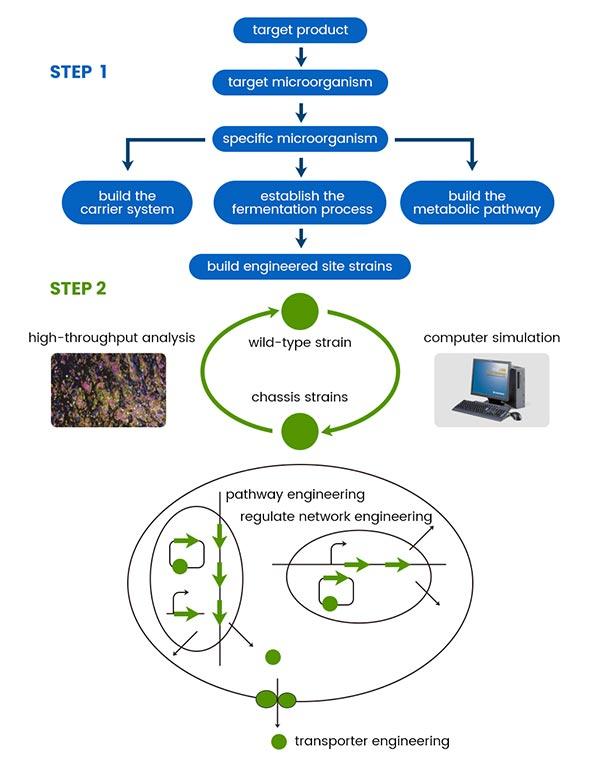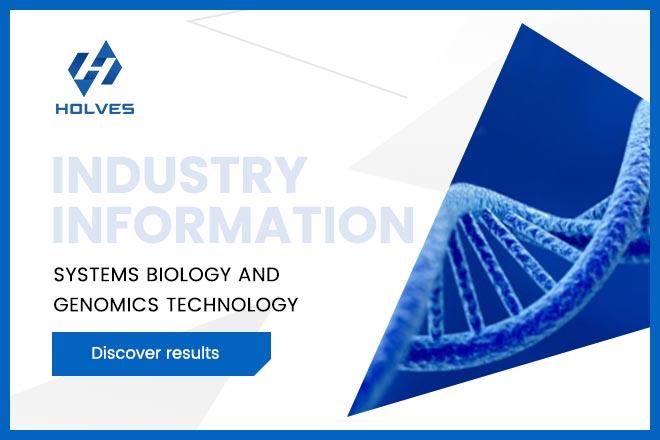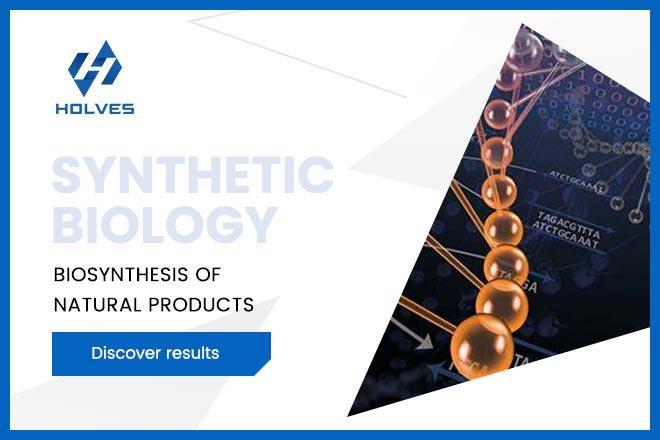The purpose of systems biology is to understand biological system at the system level, that is, to study biological macromolecules with different structures and functions and their interactions at the overall level of cells, tissues, organs and organisms Computational biology is used to quantitatively elucidate and predict biological function, phenotype, and behavior.
It belongs to both the category of application and a science, involving two fields of technology and methodology, and is a marginal, comprehensive and systematic interdisciplinary discipline between biology, mathematics, chemistry, physics and computers, and uses the concepts and methods of these disciplines to integrate, refine and form a new system and method.
The research content of systems biology is mainly carried out from the following levels:
The technical platforms for systems biology are omics such as genomics, transcriptomics, proteomics, metabolomics, interaction omics and phenomics, etc.
The following discussion focuses on genomics and its application in fermentation engineering.
The main tools and methods of studying genomics include: bioinformatics, genetic analysis, gene expression measurement, and identification of gene function, as well as mapping the genome by linkage, restriction of enzyme cleavage or DNA sequencing.
With the deepening of genomics research, researchers are trying to use genomics to gradually solve major problems in the biological, medical and industrial fields. With the development of high-throughput sequencing technology, genome sequencing is getting faster, the cycle required to obtain a complete genome is getting shorter, the genome sequences of many important industrial microorganisms have been elucidated, and typical industrial microorganisms, such as Escherichia coli, Bacillus subtilis, Bacillus macrosus, Aspergillus niger, yeast, etc., as well as the genomes of some archaea with potential application prospects, have been sequenced, and a large number of analytical tools have been developed to analyze this information.
The improvement of genomics technology has made systems biology and synthetic biology more and more complex applications in fermentation engineering. For example, the comparative genomic technique was used to analyze the pentase phosphate pathway-related genes of the high-yield lysine Corynebacterium glutamate mutant, and the point mutation of 6-phosphogluconate dehydrogenase was identified to make the enzyme insensitive to intracellular metabolites, and after binding flux analysis, it was shown that the mutation increased the yield of the pentose phosphoric acid pathway in the lysine production process by 8%.
The analytical method of systems biology is to use a large number of genomic analysis and a large number of computer software tools to quickly analyze the physiological state of the cell as a whole under a large number of cell regulation, such as transcriptional regulation, translation regulation, feedback inhibition and the distribution of metabolic flux. Methods that typically employ systems biology to engineer strains are shown in the figure below.

methods of modifying strains using systems biology
The key to using systems biology to engineer strains lies in large-scale genomic analysis and computer analysis, in addition to the fact that the metabolic processes of the cell as a whole must be taken into account while modifying the strain.
HOLVES would like to discuss with researchers the future of systems biology in the field of applied biology.
*The content and pictures of the article are compiled from the network and academic materials, and the content has been simplified and supplemented to a certain extent, if there are any deficiencies, please point out for correction.
This is the website of HOLVES brand: https://www.bjholves.com/. We provide different types of industry information, technical knowledge and solutions. We have developed and produced a variety of new laboratory fermenters, bioreactors, tangential flow filtration systems and other equipment to meet various demand links from experiments to industrial production, welcome to consult.
It belongs to both the category of application and a science, involving two fields of technology and methodology, and is a marginal, comprehensive and systematic interdisciplinary discipline between biology, mathematics, chemistry, physics and computers, and uses the concepts and methods of these disciplines to integrate, refine and form a new system and method.
The research content of systems biology is mainly carried out from the following levels:
- Understand the structure of the system, such as gene regulation, biochemical network, and entity structure
- Understand the behavior of the system and analyze the dynamics of the system qualitatively and quantitatively. and the ability to create theories or models that can be used to make predictions
- Understand how to control the system and study the mechanism of the system to control the state of the cell
- Understand how to design system, design, improve and reconstruct biological system based on clear theories
The characteristics of systems biology with systematic and holistic research goals.
- Conduct research at an integral level.
- Pay attention to the use of information methods.
- Adopt the method of modeling and analysis.
The technical platforms for systems biology are omics such as genomics, transcriptomics, proteomics, metabolomics, interaction omics and phenomics, etc.
The following discussion focuses on genomics and its application in fermentation engineering.
Genomics techniques and their applications in fermentation engineering.
The genome is generally defined as the complete set of chromosomes in a haploid cell as a genome, or all genes in a haploid cell as a genome. Since the coding sequence of a gene makes up only a small part of the entire genome sequence, the genome can also be defined as the entire DNA molecule in a haploid cell, including coding sequences and non-coding sequences.The main tools and methods of studying genomics include: bioinformatics, genetic analysis, gene expression measurement, and identification of gene function, as well as mapping the genome by linkage, restriction of enzyme cleavage or DNA sequencing.
With the deepening of genomics research, researchers are trying to use genomics to gradually solve major problems in the biological, medical and industrial fields. With the development of high-throughput sequencing technology, genome sequencing is getting faster, the cycle required to obtain a complete genome is getting shorter, the genome sequences of many important industrial microorganisms have been elucidated, and typical industrial microorganisms, such as Escherichia coli, Bacillus subtilis, Bacillus macrosus, Aspergillus niger, yeast, etc., as well as the genomes of some archaea with potential application prospects, have been sequenced, and a large number of analytical tools have been developed to analyze this information.
The improvement of genomics technology has made systems biology and synthetic biology more and more complex applications in fermentation engineering. For example, the comparative genomic technique was used to analyze the pentase phosphate pathway-related genes of the high-yield lysine Corynebacterium glutamate mutant, and the point mutation of 6-phosphogluconate dehydrogenase was identified to make the enzyme insensitive to intracellular metabolites, and after binding flux analysis, it was shown that the mutation increased the yield of the pentose phosphoric acid pathway in the lysine production process by 8%.
Strain modification based on systems biology.
Some of today's microbial products are using systems biology methods. To improve metabolic engineering on the basis of fully considering the systematization of strains is to use systems biology methods to improve the perspective of metabolic engineering, so as to achieve the purpose of strain transformation.The analytical method of systems biology is to use a large number of genomic analysis and a large number of computer software tools to quickly analyze the physiological state of the cell as a whole under a large number of cell regulation, such as transcriptional regulation, translation regulation, feedback inhibition and the distribution of metabolic flux. Methods that typically employ systems biology to engineer strains are shown in the figure below.

methods of modifying strains using systems biology
HOLVES would like to discuss with researchers the future of systems biology in the field of applied biology.
*The content and pictures of the article are compiled from the network and academic materials, and the content has been simplified and supplemented to a certain extent, if there are any deficiencies, please point out for correction.
This is the website of HOLVES brand: https://www.bjholves.com/. We provide different types of industry information, technical knowledge and solutions. We have developed and produced a variety of new laboratory fermenters, bioreactors, tangential flow filtration systems and other equipment to meet various demand links from experiments to industrial production, welcome to consult.



